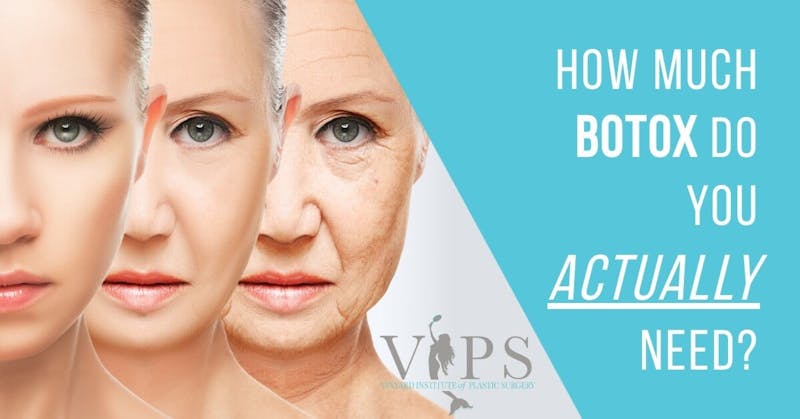
Botox burst onto the scene with tremendous fashion back in 2002 when it became the first procedure to be approved by the FDA for the treatment of frown lines between the eyebrows. Fifteen years later, Botox discovered a new side of itself alongside FDA approval to deal with moderate to serious forehead lines. To this day, it’s still one of the most minimally-invasive popular plastic surgery procedures in the world.
Are you tired of seeing a permanently furrowed brow when you peer in the mirror every morning as you get ready for work? Are you ready to iron out your worry lines so that you’ll stop looking irritated all the time? Here’s everything you need to know about starting Botox treatments for your forehead wrinkles…
Where Are Forehead Lines?
Forehead wrinkles (or fine lines – the precursor to those deep-set wrinkles later in life) stretch horizontally across your forehead above your eyes and eyebrows. The forehead is typically the first place that you begin to see wrinkles as you age. Considering that we utilize the muscles in our forehead for pretty much every facial expression in the book, it really isn’t much of a surprise that forehead wrinkles pop up first. Whether you’re smiling, frowning, furrowing your brow in frustration, or scrunching up your face while deep in thought, the forehead is the area primarily affected.
The forehead is typically the first place that you begin to see wrinkles as you age.
The position and depth of forehead wrinkles tend to make it appear as if you’re continuously irritated or perplexed, making it a problem area which most women seek to resolve as soon as they notice the lines beginning to unveil.
What Is Botox?
Botox for skin rejuvenation and wrinkle elimination is the #1 non-invasive plastic surgery procedure in America year after year due to the fact that it’s the fastest, most affordable, easiest medical procedure for reversing obvious aging.
The drug is made from a neurotoxin stemming from the bacterium Clostridium Botulinum, widely referred to as Botulinum Toxin. It most commonly treats muscular conditions and gets rid of wrinkles by briefly paralyzing muscles for cosmetic purposes, hence the need to repeat your injections every 3-6 months.
Which Three Areas Can Botox Treat?
The first neurotoxin brand approved to deal with three distinct areas, Botox is so effective that it can treat the forehead (both fine lines and serious wrinkles), the outskirts of the eyes (affectionately called crow's feet), and between the eyebrows (known as glabellar lines).
Botox can treat the forehead, crow’s feet, and glabellar lines above the nose.
Will Botox Really Eliminate Forehead Wrinkles?
To receive FDA approval, there was a medical trial to determine the effectiveness of using Botox to treat forehead lines. In the controlled research study, Botox compared positively to a placebo control group after 30 days, with around 54% of all Botox participants seeing an improvement in their forehead wrinkles, compared to less than 1% of the members of the placebo group seeing wrinkle improvement.
What exactly does that mean? Patients who undergo Botox treatments see massive improvement in the elimination of their forehead wrinkles! Are you ready to be one of them?
Is Botox a Safe Way to Treat Forehead Lines?
Absolutely! Botox is a tried and true method to safely and efficiently reduce the appearance of forehead wrinkles, taking years of wrinkles right off your face.
It’s important to remember that choosing the right plastic surgeon can make all of the difference in your results.
Though horror stories have been circulating for as long as Botox has been around, the key is selecting a certified professional who truly knows what they’re doing. Although selecting a claimed expert who offers injections for a fraction of the price might seem tempting, just as you would not visit a sketchy man living in his car rather than an actual doctor to receive your prescriptions when sick, don’t take chances with your plastic surgeon either.
In our office, you will always be safe, always be in the care of certified professionals, and always feel like the VIP that you are. That’s our guarantee.
How Much Botox Do I Need for My Forehead Lines?
The most significant factor for consideration when determining how many units of Botox you will need for your forehead is your gender. Generally, men need 2-3 more units than their female counterparts, particularly in the frown lines above the nose since men’s muscles tend to be more powerful in this area.
For females, it is typically recommended that 10-30 units be injected into the forehead for effective treatment, but your age and the intensity of the wrinkles are both additional factors to consider. The deeper the wrinkles the higher the number of units needed.
Typically for women, 10-30 units of Botox are injected into the forehead.
To determine your precise unit needs, schedule a consultation with your plastic surgeon. Expect to plan follow-up visits every 3-6 months for touch-ups.
How Do Injections Work?
It’s pretty easy: cosmetic fillers are injected directly into the neuromuscular tissue. Common injection patterns consist of roughly four or five locations on each side of the forehead and two or three spots around the external edges of the eyes. The procedure is minimally-invasive, fast, and requires no down-time. You can easily walk right out of the office and back to work.
Botox can also be utilized in conjunction with other aesthetic facial treatments, such as dermal fillers or laser treatments, to enhance the outcome of the procedures. As they only cause temporary muscle paralysis, if you decide to stop using Botox, your forehead wrinkles will eventually revert to the way they looked before the injections began.
Post-Treatment: Can Botox Cause Headaches?
After your Botox treatment, it is not uncommon to experience a moderate headache for the first few hours due to the sudden inability to use your forehead expression muscles. It will simply take your face and head a bit of time to adjust to the new sensations. There’s no need to fear; a few ibuprofen will likely eliminate any discomfort following the treatments.
Can Botox Injections In The Forehead Be Used to Treat Migraines?
If you have migraines at least every other day, you may want to consider seeking Botox treatment as an alternative to pills or shots. A significant scientific trial released in 2010 discovered that patients with persistent migraines who were treated with Botox experienced fewer headaches along with little to no side results.
These patients were treated every 12 weeks with a series of 31 injections to the forehead, temples, back of the head, back of the neck, and the back of the shoulders.
Patients with persistent migraines who were treated with Botox experienced fewer headaches.
If you would like to find out how many units of Botox will be needed to iron out your forehead lines, schedule a consultation with our office! We would love to help you begin your Botox journey.






